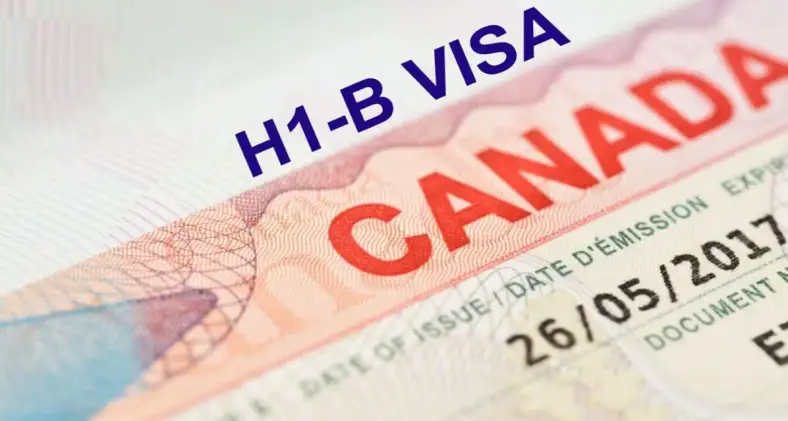When the U.S. announced plans to impose a $100,000 fee on new H-1B visa applications, a ripple went through the global tech talent pool. Could this steep increase in cost encourage skilled professionals to look north instead? In this post, we’ll explore whether higher U.S. H-1B visa fees might drive tech workers to Canada, what Canada is doing about it, and what challenges or opportunities lie ahead for such a shift.
What’s Changing with the US H-1B Visa System?
The Fee Jump
Historically, the standard H-1B application fee has been modest, only a few hundred dollars plus administrative costs. In September 2025, the U.S. government announced a new one-time $100,000 fee for new H-1B visa petitions. This change does not apply to existing H-1B holders or renewals.
The stated goal behind this policy is to reduce over reliance on foreign labor for technical roles and encourage more domestic hiring. However, many critics argue that the move will discourage companies from hiring global talent altogether.
Who It Affects Most
The H-1B program is heavily used by the tech industry, meaning the impact will fall most on software engineers, AI specialists, and data scientists. Since roughly 60% of H-1B visas in recent years have gone to computer-related occupations, the ripple effects could be significant.
Smaller startups and non-profits, which rely on affordable access to global talent, may find the increased cost impossible to absorb, potentially stifling innovation and slowing growth.
Canada Sees an Opening
Signals from Leadership
Canadian leaders have already recognized the opportunity. Prime Minister Mark Carney described the U.S. decision as “an opening for Canada to attract people who previously would have gone south for H-1B visas, people with skills, ambition, and drive.”
Carney emphasized that Canada can now offer a clear alternative for highly skilled workers facing financial and bureaucratic barriers in the U.S. He pointed out that while the U.S. raises obstacles, Canada can strengthen its reputation as a welcoming, innovation-driven country.
Existing Canadian Paths Favor Tech
Canada already has well-established routes for foreign tech professionals:
-
The Global Talent Stream, which allows certain tech occupations to receive work permits in as little as two weeks.
-
The Innovation Stream, which provides exemptions from labor market assessments for high-growth tech employers.
-
The H-1B Open Work Permit, introduced in 2023, which allowed U.S.-based H-1B visa holders to relocate to Canada; the program reached its 10,000-application cap in less than 24 hours.

These initiatives show that Canada has the infrastructure and political will to welcome displaced or redirected talent.
Will Tech Workers Actually Choose Canada?
Advantages of Moving North
-
Lower Upfront Costs
The absence of high visa fees makes Canada much more accessible to both employers and employees. -
Path to Permanent Residency
Canada’s immigration system favors skilled workers. After gaining work experience, many tech professionals become eligible for Express Entry or the Canadian Experience Class, offering a clear route to permanent residency. -
Quality of Life and Stability
Canada consistently ranks high in safety, quality of life, and healthcare access—factors that weigh heavily in relocation decisions. -
Growing Tech Ecosystems
Cities like Toronto, Vancouver, Montreal, and Ottawa are building strong tech clusters, attracting major global firms and startups alike.
Potential Drawbacks
-
Salary Disparities
U.S. tech companies typically offer higher pay. Some roles in Silicon Valley or New York can pay 30% to 50% more than their Canadian equivalents. This may discourage some workers from relocating. -
Immigration Caps and Targets
Canada has recently announced plans to slightly reduce the proportion of non-permanent residents to manage housing and infrastructure pressures. This could limit the number of new permits available over the next few years. -
Competition from Other Countries
Nations like the U.K., Germany, and Singapore are also improving visa programs for tech talent, competing with Canada for the same skilled professionals. -
Relocation Hurdles
Moving internationally involves major life changes. Workers already embedded in U.S. roles may hesitate to switch countries unless Canada provides a compelling incentive.
The Shift Already Taking Shape
Consider this example: A mid-level software engineer in India once viewed the U.S. as the ultimate career goal. With the new six-figure visa fee, that dream suddenly becomes less viable. Canada, by contrast, offers a straightforward process, affordable fees, and a clear path to permanent status.
At the same time, U.S. startups facing hiring barriers might open satellite offices in Canadian tech hubs. Several major firms have already expanded operations to Toronto, Vancouver, and Montreal—regions known for their skilled talent pools and favorable immigration policies.
This pattern suggests a growing “northward migration” of both talent and employers, shifting the balance of innovation across North America.
What Comes Next
Policy and Legal Developments
The new U.S. visa fee could still face legal challenges or modifications before full implementation. Businesses, especially in the tech sector, are already lobbying for more balanced solutions.
Canadian Strategy Adjustments
To fully benefit from the shift, Canada will need to maintain efficient visa processing, improve affordability in major cities, and continue offering attractive permanent residency pathways.
Economic Implications
If Canada continues to attract high-skilled professionals, it could see significant boosts to its innovation economy, tech exports, and global competitiveness.
So, could higher U.S. H-1B visa fees push tech workers to Canada? All signs point toward yes. With the U.S. setting financial barriers and Canada actively welcoming global talent, the scales are tilting northward.
Still, for Canada to turn this into a lasting advantage, it must sustain policies that make life and work appealing beyond just entry—competitive pay, affordable living, and continued innovation support. If it succeeds, Canada could become not just an alternative to Silicon Valley but a new global hub for talent-driven technology.
